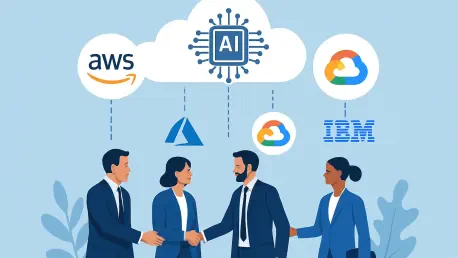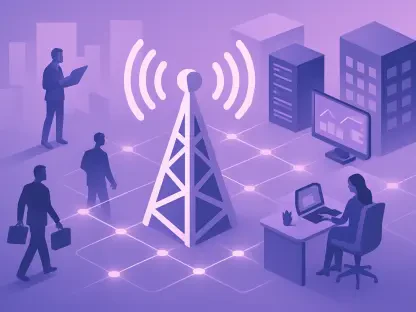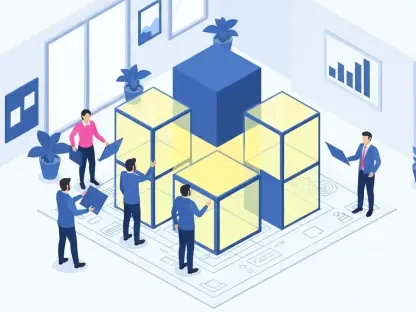Chloe Maraina, a visionary in data management and integration, joins us today to share her insights into the exciting new developments at OpenAI. With an extraordinary talent for transforming big data into compelling visual narratives, Chloe offers a unique perspective on the recent addition of Google Cloud as a key partner in OpenAI’s infrastructure network. Her analysis will shed light on how these collaborations shape the future of AI deployment and data science.
Can you explain why OpenAI decided to add Google Cloud as a partner alongside Microsoft, Oracle, and CoreWeave?
OpenAI’s decision to bring Google Cloud on board stems from the increasing demand for computing power required to train and deploy sophisticated AI models. By diversifying its cloud partners, OpenAI aims to tap into Google’s advanced AI infrastructure while reducing its dependency on a single provider. This strategic move allows them to leverage different technological strengths offered by each partner.
How does the partnership with Google Cloud benefit OpenAI’s infrastructure and AI capabilities?
Google Cloud offers a unique set of tools and services that enhance OpenAI’s infrastructure. It brings highly scalable and efficient computing resources necessary for managing the intensive workloads of AI models. Additionally, Google’s experience and focus on AI innovation allow OpenAI to access cutting-edge technologies that optimize their model training and deployment processes.
What were the key factors that led to the successful agreement between OpenAI and Google Cloud?
The successful deal was largely due to aligning strategic goals and the potential for mutual growth in the AI ecosystem. Both companies recognized the opportunity to enhance their AI offerings by combining OpenAI’s research expertise with Google’s technological capabilities. The removal of exclusivity constraints with Microsoft also opened doors for finalizing the agreement.
How does the new deal with Google impact OpenAI’s existing partnership and relationship with Microsoft?
While Microsoft remains a vital partner, the elimination of exclusivity indicates a shift towards a more collaborative approach in OpenAI’s partnerships. This new arrangement allows OpenAI to explore varied opportunities with multiple cloud providers, fostering innovation and growth. The partnership with Google complements the existing synergy with Microsoft, positioning OpenAI to fully capitalize on diverse technologies.
Could you elaborate on the initial exclusivity arrangement OpenAI had with Microsoft?
Initially, OpenAI had a commitment to using Microsoft’s Azure as its sole data center service provider. This exclusivity was part of a broader collaboration agreement aimed at advancing AI model development. Although beneficial, the exclusivity limited OpenAI’s ability to harness a broader range of cloud technologies, a factor that influenced their decision to diversify.
What changes for OpenAI now that the exclusivity with Microsoft has been dropped?
With the dropping of exclusivity, OpenAI can exploit cloud services from multiple vendors, giving it a competitive edge. This shift allows them to experiment with various advancements while selecting the best-suited infrastructure for specific projects, thereby enhancing efficiency and flexibility in AI model deployment and scaling.
How does the Stargate program fit into OpenAI’s overall strategic infrastructure goals?
The Stargate program aligns with OpenAI’s strategic aim of building a robust, diversified cloud infrastructure. By partnering with companies like Oracle and SoftBank, OpenAI seeks to expand its data center capabilities exponentially, ensuring they can sustain the massive computational needs of future AI developments.
What are the aims and expected outcomes of the Stargate program with Oracle and SoftBank?
The Stargate program aims to construct advanced AI data centers valued at over $500 billion. With Oracle and SoftBank, OpenAI plans to boost its processing power capacity substantially. The expected outcome is a significant elevation in the efficiency and scalability of AI infrastructure, supporting more complex and larger-scale AI models.
Why did OpenAI choose to collaborate with SoftBank for the Stargate program?
OpenAI’s collaboration with SoftBank is driven by SoftBank’s reputation for innovation and its global influence in technology and communications. This partnership provides OpenAI access to vast resources and networks, which are crucial for the expansive goals of the Stargate initiative.
How does OpenAI’s partnership with CoreWeave support its expansion of GPU access?
CoreWeave offers OpenAI a specialized and scalable solution for GPU resources, crucial for the computational demands of AI training. Their collaboration ensures that OpenAI has robust access to the necessary hardware, which is critical for maintaining the pace of AI advancements and staying competitive.
What were some of the challenges faced in setting up the agreement with Google Cloud?
One of the main challenges was navigating the existing agreements and commitments with Microsoft. There were also technical and logistical hurdles to ensure seamless integration of Google’s cloud services into OpenAI’s existing framework. These challenges were overcome through intensive negotiations and a clear understanding of mutual benefits.
How does OpenAI plan to balance its use of Microsoft Azure, Google Cloud, and other infrastructure providers like Oracle and CoreWeave?
OpenAI plans to strategically allocate workloads across its cloud partners based on their respective strengths and capabilities. By doing so, they can optimize cost-efficiency, performance, and flexibility, ensuring that the best fitting services support different aspects of their AI operations.
What distinguishes Google Cloud from other providers that OpenAI works with like Amazon Web Services and Microsoft Azure?
Google Cloud stands out with its strong emphasis on AI development tools and its efficiencies in data analytics. Its established AI frameworks and machine learning capabilities offer OpenAI distinct technological advantages that are not as prevalent with other providers.
How does the partnership with Google Cloud align with OpenAI’s broader vision for AI deployment?
The Google Cloud partnership complements OpenAI’s vision by providing enhanced computational resources and access to pioneering AI technologies. This alignment supports OpenAI’s mission to accelerate AI advancements and make powerful AI more accessible and efficient for various applications globally.
How does OpenAI’s collaboration with Oracle support its GPU capacity needs?
Oracle’s infrastructure offers substantial advantages in providing additional GPU capacity, essential for handling complex AI workloads. By utilizing Oracle’s capabilities, OpenAI is able to scale their projects faster and more effectively, ensuring continuous development and innovation in their AI models.
What role does the White House visit play in OpenAI’s strategy with Oracle and Microsoft under the Stargate initiative?
The White House visit underscores the importance of these partnerships in achieving significant milestones and addressing national priorities regarding AI technology. It highlights OpenAI’s commitment to collaborative efforts with Oracle and Microsoft to position the U.S. as a leader in AI infrastructure and innovation.
Can you provide insights into how OpenAI plans to address the rapidly growing demand for computing power?
To meet this demand, OpenAI focuses on building a diversified and scalable infrastructure through varied partnerships. This approach includes expanding data centers, increasing GPU access, and investing in cutting-edge technology that efficiently supports large-scale AI training and deployments.
How does OpenAI anticipate its partnerships will evolve in the future in response to AI infrastructure demands?
OpenAI anticipates its partnerships will continue to evolve towards greater collaboration, where joint ventures spur innovative solutions to meet growing infrastructure needs. They are likely to pursue more strategic alliances that offer specialized services and technologies tailor-made for future AI developments.









